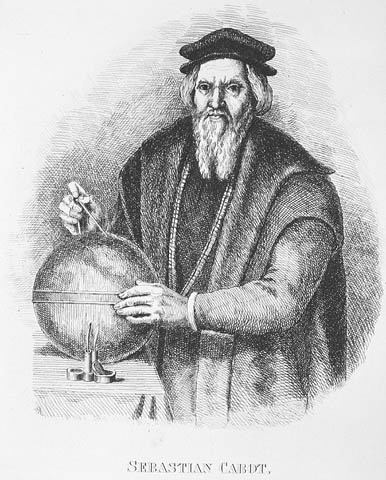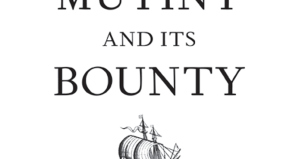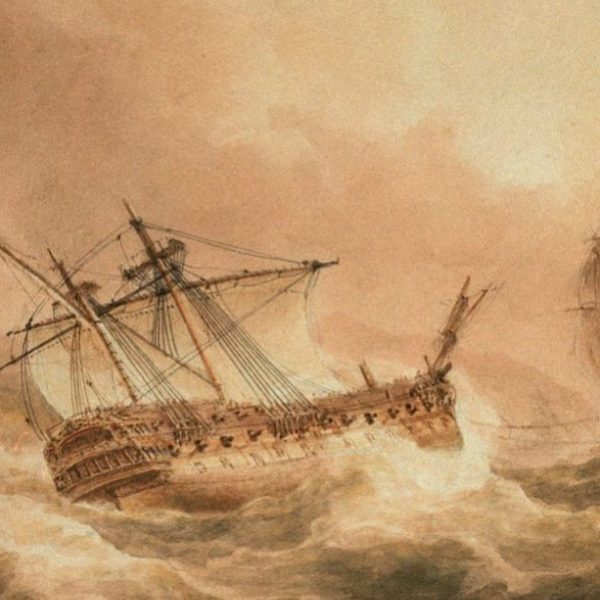Mutiny Profiles: Sebastian Cabot
 Sebastian Cabot shows today’s leaders a caveat regarding how it is possible for one with limited ability to mislead and manage impressions and still achieve success.
Sebastian Cabot shows today’s leaders a caveat regarding how it is possible for one with limited ability to mislead and manage impressions and still achieve success.
Patrick J. Murphy and Ray W. Coye’s Mutiny and Its Bounty: Leadership Lessons from the Age of Discovery explores how great seafaring captains like Columbus and Magellan not only quelled mutinies but also built upon such incidents to strengthen their enterprises. Today’s organizational leaders have much to learn about leadership and tactics from these earlier masters. Learn more and read a short excerpt from the book below.
A few leadership qualities of the mysterious Sebastian Cabot:
- Guileful. Able to influence others interpersonally but not when dealing with groups.
- Incredible ability to mislead of those in power in order to achieve his aspirations.
- Complex leadership style, often generated positive and negative outcomes simultaneously.
- Despite low seafaring expertise, huge effect on English seafaring just prior to England’s golden age.
Patrick J. Murphy and Ray W. Coye—
English seafaring might have developed differently without the mercurial Cabots. The elder, John Cabot (Giovanni Caboto), had much in common with Christopher Columbus (Christoforo Colombo) and was similarly inspired by Marco Polo. Cabot’s birthplace is unclear, but he became a Venetian citizen (Zuan Chabotto) in the mid-1470s. From Venice, he visited Mecca disguised as a Muslim to research spice caravans. By the late 1480s, debt-laden from failed construction projects, Cabot fled to Spain. There he claimed exeprtise in construction on water (learned in Venice). In the early 1490s, he proposed harbor redesigns in Valencia nad a stone bridge across the Guadalquivir River in Seville to repalce a 700-year -old floating one. In 1494, the bridge project’s funding was withdrawn. Cabot then went to England, where he sensed quickly that the English wanted from him what Columbus had done for Spain.
…
It is not exactly clear when or where Sebastian Cabot was born (circa 1475, probably in Venice) or when he died. What is clear is that he was a strategic, passionate explorer with a worldly, entrepreneurial spirit. His character reflected the intensity of Magellan and the cleverness of Columbus. He often acted with multiple intentions that seemed conflicting but would prove congruent. His actions could be mysterious, and he had an uncanny and unerring capacity for achieving simultaneously positive and negative results. Cabot was a master at turning utter failures into successes. He was also a rebel. For example, Cabot turned south during his 1508 trip to the northwest Atlantic and traced the North American coast almost all the way to Florida–a sidetrip beyond the scope of his contract. He did not stop until mutiny compelled him to head back to England.
When Cabot returned to England from his Florida excursion, it was early 1509, and a new king, Henry VIII, was on the throne. Cabot’s venture had generated nothing other than a rough survey of the American coastline that offered no new information. He lost some credibility as a navigator, but his carefully engineered reputation for world-class cartography skills won him a royal commission to make maps and charts. This career move took him away from his more entrepreneurial aspirations as a navigator. A map he made in May 1512 guided the English army to Spain as part of a campaign against Aquitaine in southern France. Cabot joined that expedition secretly hoping to find Spanish employment as a seafarer in a culture that valued discovery and exploration more strongly.
When the English army mutinied and the whole expedition dissolved, Cabot snatched his opportunity. A few months later, he secured a meeting with the secretary of the Spanish princess Juana Loca (Joanna the Mad) at Burgos, which was instrumental in gaining an audience with her father, Ferdinand II of Aragon. Many people in Spain had heard of Cabot’s father, and he freely used his father’s name when it helped his cause. Moreover, Ferdinand’s other daughter, Catherine of Aragon, had recently become Henry VIII’s first queen. Henry eventually banished her and married Anne Boleyn, but at this early point Ferdinand welcomed this “Englishman” who had served his admirable English son-in-law. Cabot’s clever presentation of ability and knowledge was met with favor.
Excerpted from Mutiny and Its Bounty: Leadership Lessons from the Age of Discovery. Copyright © 2013 by Patrick J. Murphy and Ray W. Coye. All rights reserved.





